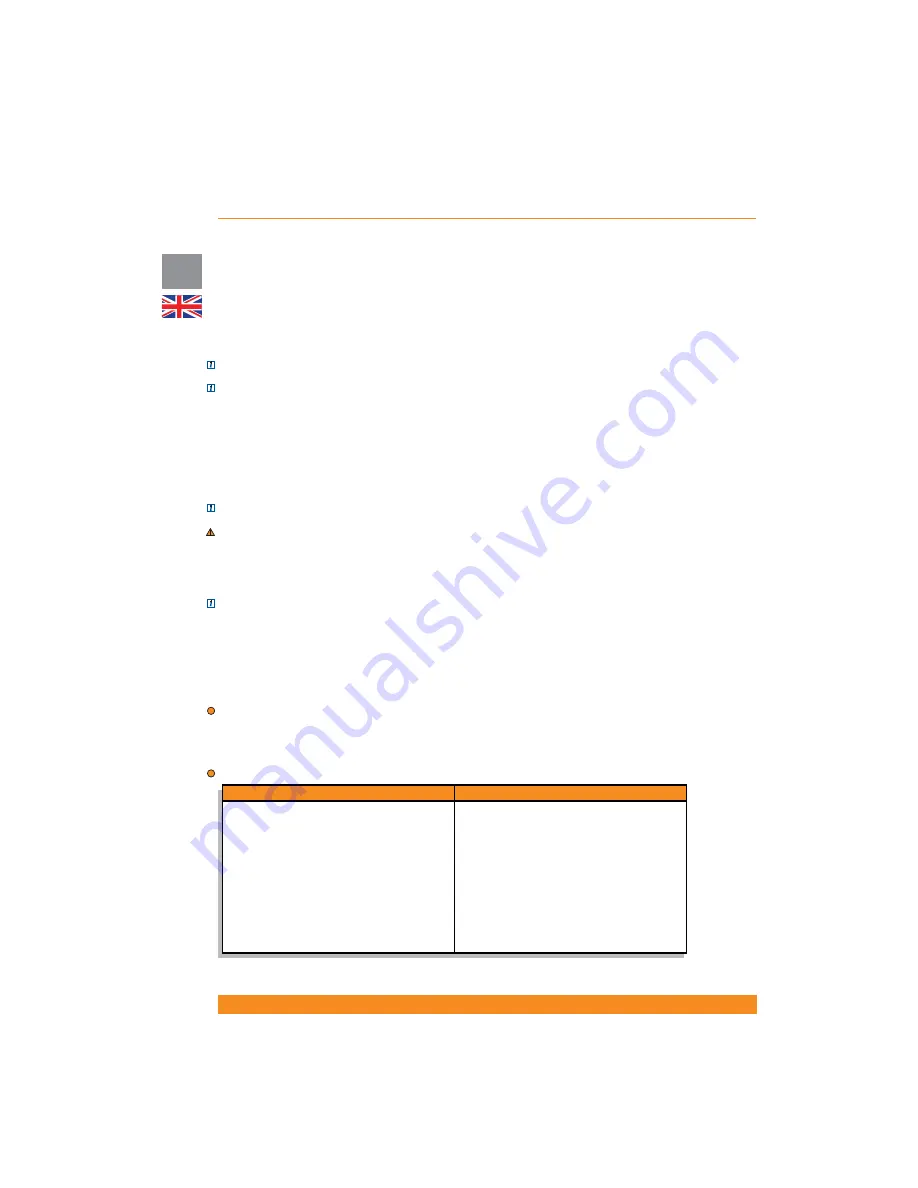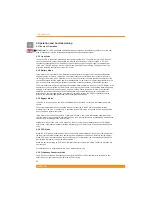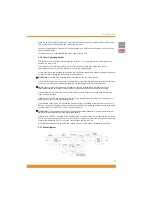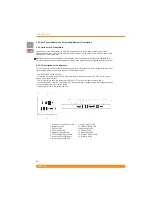
28
UK
Chloride Active
945044.066
and one battery receptacle on the rear of the second battery pack
4. Continue “daisy-chaining” the battery packs until all are connected.
5. Connect a battery pack detection cable between the RJ11 port on the rear side of the UPS and a RJ11
port on the rear side of the rst battery pack
6. Connect a battery pack detection cable between one RJ11 port on the rear of the rst battery pack and
one RJ11 port on the rear of the second battery pack
7. Continue “daisy-chaining” the battery packs with the battery pack detection cables
8. Set the circuit breakers on each battery cabinet to “ON” position
NOTE:
The maximum quantity of external battery packs that can be connected to the UPS is four.
NOTE:
for special or customized external battery con gurations, it is possible to select the external battery
capacity via LCD Display
4.4.2.2 Power Connections
After all external batteries are connected, make the necessary input and output power connections by
following the steps below.
1. Connect the input power cord to the AC inlet
NOTE:
The batteries will immediately begin charging upon availability of the input power.
WARNING:
as soon as the UPS is connected to the AC mains supply, voltage is available at the output
sockets (via internal bypass), even if the inverter ON button has not been pressed
2. Connect the load to the UPS. It is suggested that the highest priority equipment be attached to the main
outlets and that lower priority loads be attached to the controllable outlets.
NOTE:
With the LCD Display front panel or user software, the controllable outlets can be set to have a
pre-scheduled shutdown during battery operation in order to conserve battery power for the highest priority
loads.
3. After all connections are made, follow the instructions in the next section (“Start-up Procedure”) to start
your UPS and external battery packs
4.4.3 Start-up Procedure
ATTENTION:
This UPS is supplied with standard power cords and receptacles suitable for its use in your
area of operation. It may be installed and operated by non-technician personnel.
4.4.3.1 Initial UPS Start-up Procedure
ATTENTION:
When the UPS is started for the rst time, AC power must be present
Units with LED indicators
Units with LCD display
When using the UPS for the rst time, con rm AC power
is present. Following 4.4.2.2, power should be available
to the connected equipment via internal bypass once the
input has been connected to the AC mains.
Press the inverter ON/OFF button to switch on the
inverter and switch the UPS to line mode. The UPS
will respond with some beeps and illuminations of LED
indicators, and turn on the Line Mode LED and Inverter
ON LED indicating that the unit is now in line mode.
Protected power should now be available to the
connected equipment via the inverter.
When using the UPS for the rst time, con rm AC power
is present. Following 4.4.2.2, power should be available
to the connected equipment via internal bypass once the
input has been connected to the AC mains.
Press the inverter ON/OFF button to switch on the
inverter and switch the UPS to line mode. The UPS will
respond with some beeps and then turn on the Mains
LED and the inverter ON LED indicating that the unit
is now in line mode. The LCD Display will show the
message LOAD PROTECTED and will indicate the
output power.
Protected power should now be available to the
connected equipment via the inverter.
















































